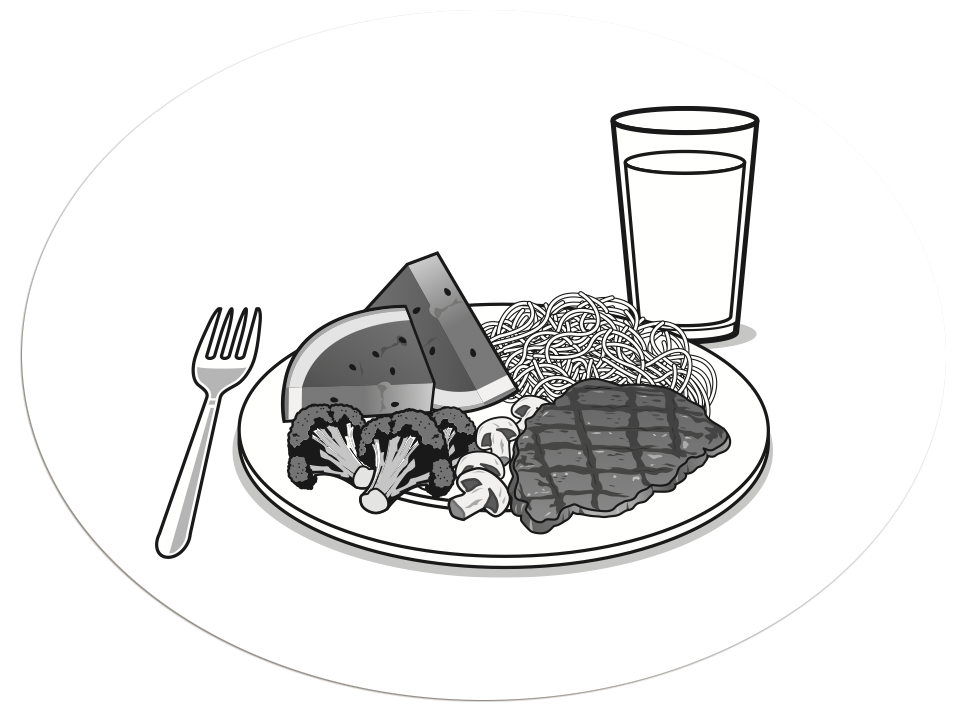This lesson is one out of four lessons designed for grades six through eight which promote the development of STEM abilities and critical thinking skills, while fostering an appreciation for the people involved in food production. The new curriculum includes inquiry-based labs, real life challenges for students to investigate and opportunities to plan and construct products and shipping models. Other lessons in this series include:
 A foodborne illness is when a person becomes sick after consuming food that is contaminated with:
A foodborne illness is when a person becomes sick after consuming food that is contaminated with:
- microorganisms such as bacteria, viruses, and parasites
- chemicals such as household cleaners
- physical objects such as glass or metal
Symptoms of foodborne illness include upset stomach, nausea, vomiting, stomach cramps, fever, and diarrhea. Microorganisms play a role in the majority of foodborne illnesses. Most microorganisms are harmless, yet some can make us sick. The microorganisms that cause illness are called pathogens.
- Viruses are the smallest forms of life on Earth, yet cannot reproduce outside of a living host cell. Viruses are responsible for illnesses like colds and flu. Hepatitis A and norovirus are examples of viruses that cause foodborne illnesses.
- Parasites are tiny organisms that require a host to live. Examples are amoebas that may be found in unclean drinking water, Anisakis roundworm that can be found in fish, and Trichinella spiralis that may be found in pork.
- Fungus including yeasts and molds are often used in making foods such as bread and cheese, but can also spoil food and make people sick.
Bacteria are single-celled organisms. While most are harmless, some are pathogenic. These pathogenic bacteria are often responsible for most cases of foodborne illness. Using nutrients found in food, bacteria can quickly multiply under the right temperature conditions. As bacteria multiply, they excrete toxic waste products that can make people sick after consuming contaminated food. If conditions are favorable, bacteria numbers can double every ten to thirty minutes. Proper food handling, storage, and preparation can prevent most foodborne illnesses caused by the pathogens described above. There are many careers dedicated to keeping our food safe. These careers involve the latest in science and technology to find new methods of providing people with a healthy food supply. The U.S. Department of Food and Agriculture (USDA) regulates meat, poultry, and eggs, and the U.S. Food and Drug Administration regulates the rest of the food produced in or imported into the country. Local health inspectors regulate restaurants, supermarkets, and other food service businesses and organizations in our communities.
In general, a food safety specialist’s job is to make sure that our food is wholesome and safe by applying their knowledge of food science, bacteriology, microbiology, food laws, regulations, and hazard analysis. Food safety specialists work in hotels, government agencies, restaurants, factories, and more. There are a wide range of employment opportunities and careers linked to food safety. Visit the USDA Food Safety and Inspection Services website www.fsis.usda.gov and select Careers then Opportunities and Types of Jobs to read descriptions of duties and qualifications.
Everyone can play a role in preventing foodborne illness. Food safety specialists recommend following four simple steps before handling or eating food: clean, separate, cook, and chill.
Clean
- Wash hands with soap and water for 20 seconds or for the length of time it takes you to sing the happy birthday song twice.
- Wash utensils, cookware, and surfaces with soap and water.
- Rinse fruits and vegetables with water. (Do not wash meat or eggs.)
- Cover your mouth and nose with your elbow when coughing or sneezing. Wash your hands after blowing your nose.
Separate
- Use separate cutting boards and plates for raw produce, meat, poultry, seafood, and eggs.
Cook
- Bacteria that cause food poisoning multiply quickest between 40 degrees Fahrenheit and 140 degrees Fahrenheit—this temperature range is known as the Danger Zone. Cooked food is safe after it has been heated to at least 140F. Use a food thermometer to check the temperature of cooked food. Microwave foods to 165F.
Chill
- Refrigerate perishable foods within two hours to slow the growth of illness-causing bacteria. Refrigerators should be kept between 40°F and 32°F, and your freezer should be 0°F or colder.
- Don’t thaw or marinate foods on your kitchen counter or table. Instead, thaw food in the refrigerator or microwave and marinate in the refrigerator.

 A foodborne illness is when a person becomes sick after consuming food that is contaminated with:
A foodborne illness is when a person becomes sick after consuming food that is contaminated with: